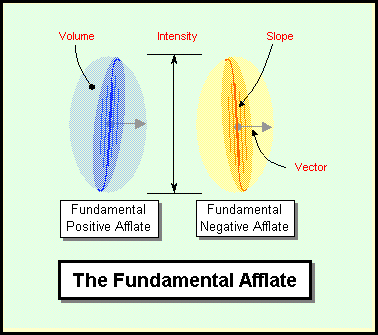All observations are probabilistic in nature. One cannot, through observation alone know of anything with certainty… ever. Logic is required to know with certainty.
My concern earlier was your statement that you begin with observations. That cannot be. Every observation assumes a great many things merely to form the picture that you consider “an observation”. Thus RM:AO begins with logic, specifically Definitional Logic. Thus RM:AO begins with what has no choice but to be true, although being “true” at that stage is not of necessary concern. The trick is to then ensure that each logic step remains perfect so that where ever the logic leads, the same degree of absolute truth follows.
Only the present “exists” (“has affect”). The future is the present’s Effect. And the past is the present’s affector.
Their image exists, not them. What you experience, the affecting, occurs through and after time has passed (again by necessity of “affecting”).
You are never affected immediately by any affector. The amount of time that passes between the affector and the affected is what determines what we call “distance”. Physical distance is caused by the effort of light to propagate. The act of recording or documenting slows the propagation into a “particle” (something that doesn’t change much at all). Once that happens, the particle (the documentation, video recording, what ever) can continue to affect even though the original affector has passed away. The stars that you see might not exist at all anymore. You are being affected by the residual effects, “documented” merely by the time it took for their image to get to you. Their image has been stored in space via propagation, but is dissipating.
It is easy to think that chemistry doesn’t reflect reality until you come to fully understand chemistry. All complex or all encompassing ontologies will require a great deal of study before one can say that the ontology doesn’t reflect their observations. Nothing is more all encompassing than RM.
My point is that the “observation” already has presumed reasoning within it that must be humble to reconsideration. What you think that you see, might not be what you actually see. The cognitive mind can construct an ontology that can be used to verify that the subconscious’s natural ontology and reasoning was or wasn’t accurate. Many things turn out to be “counter intuitive”.
That is absolutely impossible. “This universe” and “affectance” are the same thing, merely differing in perspective. Affectance necessarily includes all physical existence, by definition. But Affectance Ontology goes beyond merely the physical universe. RM:AO also includes the “Conceptual Realm” (or mental realm, divine realm, spiritual realm, or whatever names it has been given). There can be nothing real that has been excluded. If a “consciousness” by your definition exists, it is a part of the Affectance. But it implies a complex thing and thus isn’t a part of the initial explanation that must begin with the simplest concepts possible.
“Fixed and not random”???
If you mean that it always obeys the same rules or principles, then you are right. There is no possibility of it ever being other than it is and thus doing what it does. But since the entire universe is formed by what it does, what need is there for it to be different?
Consider that they really are “obeying the rules” and it is merely your misunderstanding of those rules that makes it appear as though they aren’t. Again, your observations can trick you because they naturally presume reasoning that has not been verified.
“Random behavior” merely means behavior that you don’t know enough about to predict. The word “random” directly infers ones lack of knowledge. The universe itself can never have anything whatsoever actually disobeying exact laws/principles. But to predict behavior requires extreme knowledge of the current state. If total knowledge of the current state down to the most infinitesimal detail is know, the entire future can be exactly predicted without a single flaw. But good luck gaining such knowledge. ![]()
You are presuming that before learning of it. But you cannot prove your supposition, because it happens to not be true.
I am forever struggling with “tool” issues concerning JiB. Progress has become extremely slow. My equipment is very limited. And my brain “ain’t what it used to be”. ![]()

